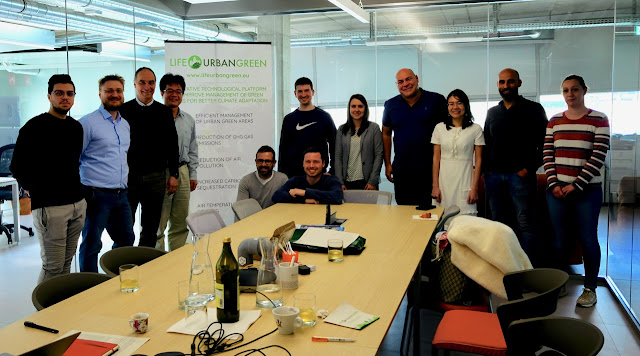
This research proposes a vulnerability assessment framework of Urbangreen Spaces (UGSs) to typhoons by using remote sensing and GIS approaches since Taiwan is one of the most typhoon exposed countries in the world. The main objective is to reduce potential damages caused by typhoons. For the first year (6/1/2019~5/31/2020), analyze the typhoon characteristics and identify the impacts of typhoons on the UGSs in Taiwan; derive the UGS information (biological and physical features) from multi-sensor satellite images to build a GIS database for the UGS server for further assessment. For the second year (6/1/2020~5/31/2021), derive the soil characteristics from the soil map and remote sensing data; propose an assessment framework to evaluate the vulnerability of the UGSs to the typhoons in major cities in Taiwan; implement the R3 GIS platform and integrate it with new tools in a testbed of Taipei City in accordance with the selected Actions in the Life Urbangreen Project. For the third year (6/1/2021~5/31/2022), the improved R3 GIS platform after integrating with new tools of assessing the vulnerability of UGSs to typhoons will be tested and performed in accordance with selected Actions from the Life Urbangreen Project for demonstration of its benefits to UGS management in Taiwan. Also, establish a Taiwan-EU Joint Research Promotion Office, aiming to promote and sustain bilateral cooperation.
It is expected that research outcomes will provide a warning system to serve the related authorities for mitigating the damages of typhoons on UGSs and communities. The vulnerability of UGSs in Taiwan to typhoon winds can be assessed via three components:
1. Typhoon characteristics
2. UGS features
3. Soil composition.
These factors will together reveal the possibility of fall of trees during the threat of typhoons. Thus, the integration of all mentioned factors can provide a risk assessment approach-based framework that has the potential to provide a warning to the related authorities with possible solutions for mitigating the damages of both public properties and UGSs. The findings of this proposed study will be valid in three areas:
1.Incorporation of typhoon connections into the design or management of greenspace systems should be of high priority.
2. Increasing dialogue between government and scientists cab be an important step towards integrated thinking and learning methods that are required to effectively mitigate the impacts of typhoons on greenspaces of the city.
3. A good understanding of typhoon influence on greenspaces may lead to improved vegetation protection strategies for mitigating the damages.








